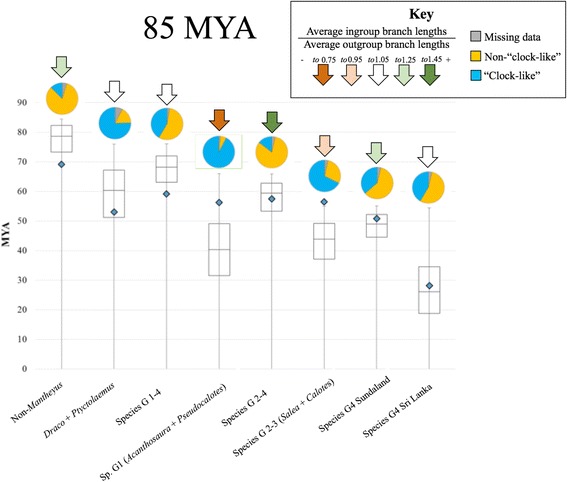Fig. 4.

Box-and-whisker plots, showing results of our analysis using our UCE_divergence_timing R script (minimum, 25 % quartile, 75 % quartile, maximum) with a minimum estimate for the age of Draconinae of 85 MYA used to calibrate the ages of the Non-Mantheyus clade. For subsequent subgroups, the estimated age of the clades were contained within this calibration point. For each group’s divergence timing estimate, only loci that appeared “clock-like” (ingroup age estimate did not exceed the calibration age) were used. Percentages of loci that were “clock-like” versus non-“clock-like” (likely affected by rate variation or incomplete lineage sorting), and loci with missing data for outgroups (sister species of the groups of interest) are shown in pies above box-and-whisker plots (see key). Clades with red arrows show slow-downs relative to their outgroups i.e. average cumulative branch lengths leading to ingroup taxa from the ingroup/outgroup node are shorter than those leading to the outgroups (this appears to be correlated with underestimates of divergence times using the naïve strict clock method), clades with green arrows show rate speed-ups relative to their outgroups i.e. average cumulative branch lengths leading to ingroup taxa are longer than those leading to the outgroups. Bayesian estimates of divergences times performed in BEAST are shown as small blue diamonds, for comparison
